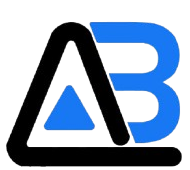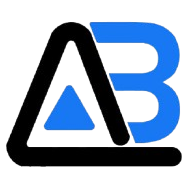In 2025, the digital marketing landscape continues to evolve, and Facebook remains one of the most powerful platforms for advertisers. With over 2.9 billion active users, Facebook (and its broader Meta Ads network, including Instagram) provides unmatched targeting capabilities and reach. However, to maximize return on investment (ROI), businesses must move beyond basic ad creation and embrace advanced strategies. In this post, we’ll explore 5 proven Facebook Ads strategies that can help you boost performance and generate more revenue in 2025.
As privacy regulations and cookie limitations tighten, advertisers must rely more on first-party data—information collected directly from their audience via website forms, CRM systems, or app interactions.
How to do it:
Create Custom Audiences using email lists, customer databases, or website visitors (via Meta Pixel).
Build Lookalike Audiences based on your best customers to find similar potential buyers.
Use Engagement Audiences from people who interacted with your Instagram or Facebook page, ads, or content.
Pro Tip: Combine demographic filters (age, gender, location) with behavioral signals (interests, past purchases) for even more refined targeting.
Why it works: Highly-targeted audiences are more likely to convert because the ads are relevant to their needs and interests.
In 2025, attention spans are shorter than ever. Creative is the #1 driver of campaign performance. Yet, many advertisers still run static or repetitive ads.
How to do it:
Test different ad formats: single image, video, carousel, reels, and stories.
Try varying your copy style: emotional vs. logical, short vs. long-form.
Use dynamic creative ads to automatically mix and match headlines, images, and calls-to-action.
Pro Tip: Run A/B tests using Meta’s Experiments tool to see which creatives truly perform better.
Why it works: Fresh, engaging creatives prevent ad fatigue and improve CTR (click-through rate), which directly impacts your ad costs and ROI.
Most people don’t buy the first time they see your ad. That’s why retargeting is a critical component of a high-ROI Facebook ads strategy.
How to do it:
Top of Funnel (TOF): Reach cold audiences with value-packed content or lead magnets.
Middle of Funnel (MOF): Retarget website visitors or video viewers with product benefits or testimonials.
Bottom of Funnel (BOF): Serve cart abandoners or engaged leads with exclusive offers or urgency-driven messaging.
Pro Tip: Use sequential retargeting—showing ads in a specific order to guide users down the funnel.
Why it works: It keeps your brand top-of-mind and nurtures leads, leading to higher conversion rates at a lower cost.
With iOS updates and cookie restrictions affecting tracking accuracy, Meta introduced the Conversions API (CAPI) to help advertisers maintain data flow between their website and Meta Ads.
How to do it:
Integrate CAPI via tools like Google Tag Manager, your website’s backend, or platforms like Shopify and WordPress.
Ensure you’re sending key events such as purchases, form submissions, and page views.
Combine CAPI with Meta Pixel for maximum data coverage.
Pro Tip: Regularly audit your events using Meta Events Manager to ensure data consistency.
Why it works: Better data tracking improves Meta’s ability to optimize your campaigns and deliver your ads to the right people.
Many advertisers make the mistake of setting up messy campaign structures that confuse Meta’s algorithm. Clean, goal-based structuring helps the platform learn faster and deliver better results.
How to do it:
Stick to the Power 5 structure: simplified account structure, campaign budget optimization (CBO), dynamic creatives, automatic placements, and broad targeting.
Group similar ad sets under the same campaign for better learning.
Let campaigns run for at least 3-5 days before making changes to avoid disrupting the learning phase.
Pro Tip: Use Advantage+ Campaigns (Meta’s AI-powered solution) to automate optimization for highest-value actions.
Why it works: Efficient budget allocation and clean structures help Meta’s machine learning deliver better performance with lower cost per action.






